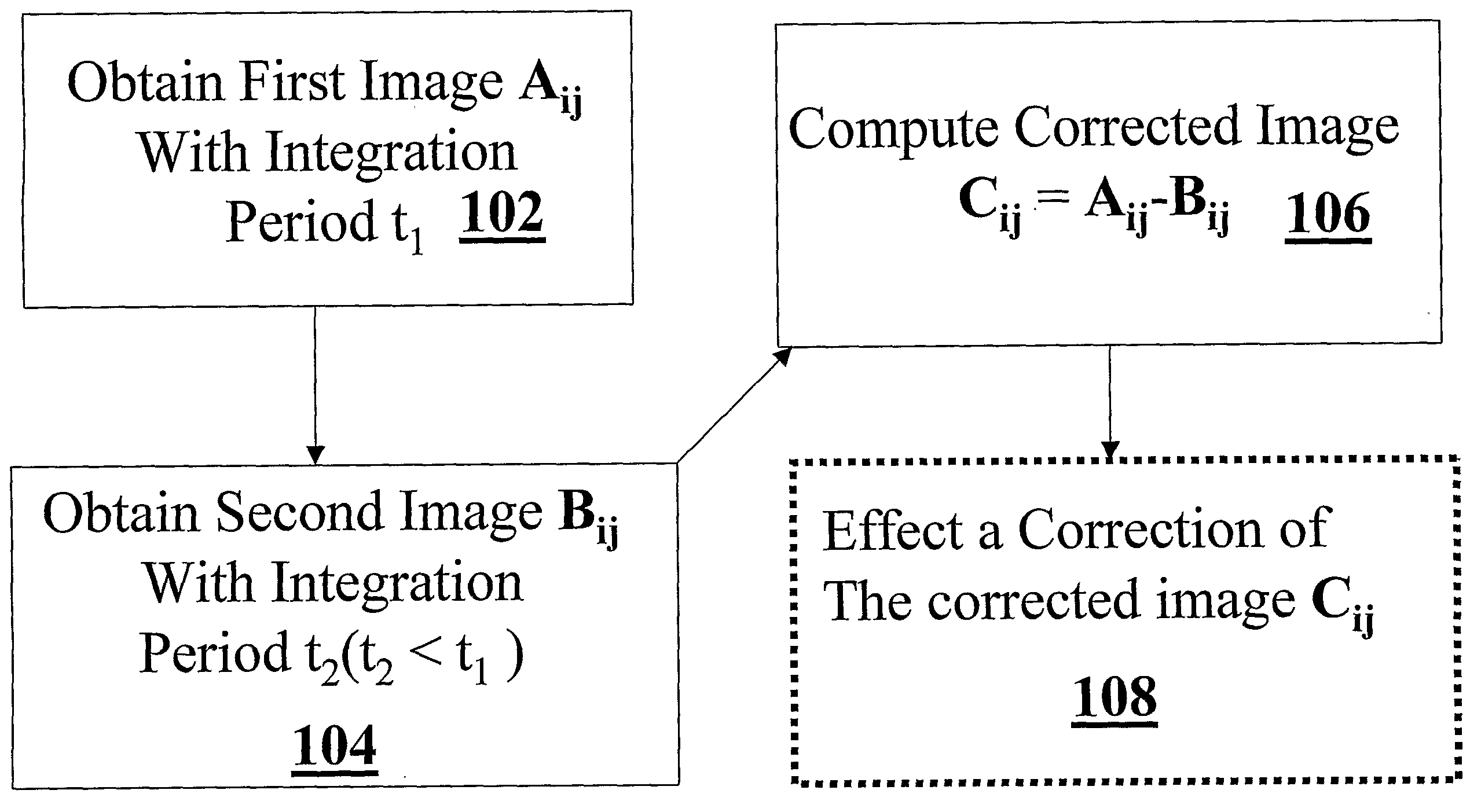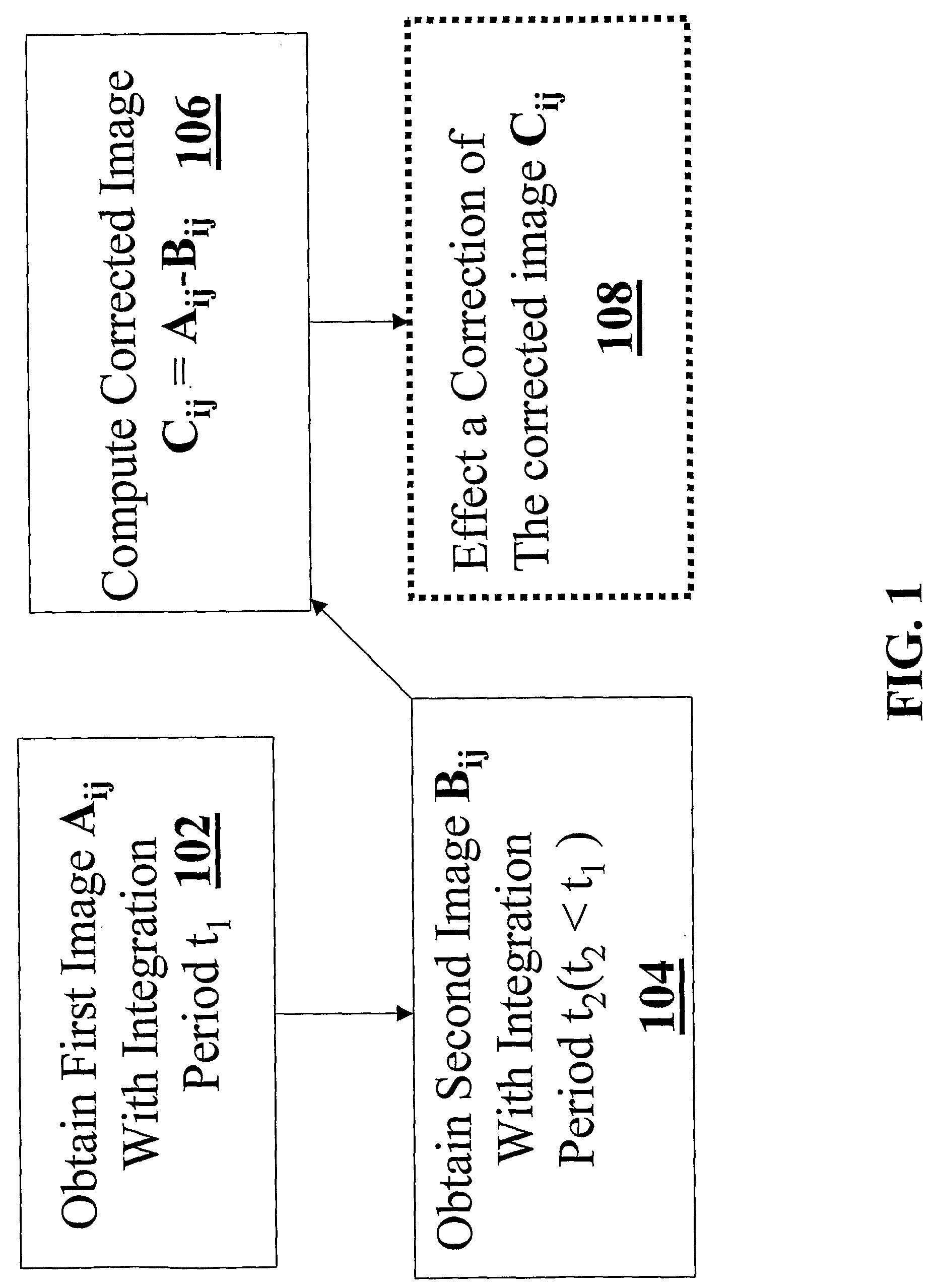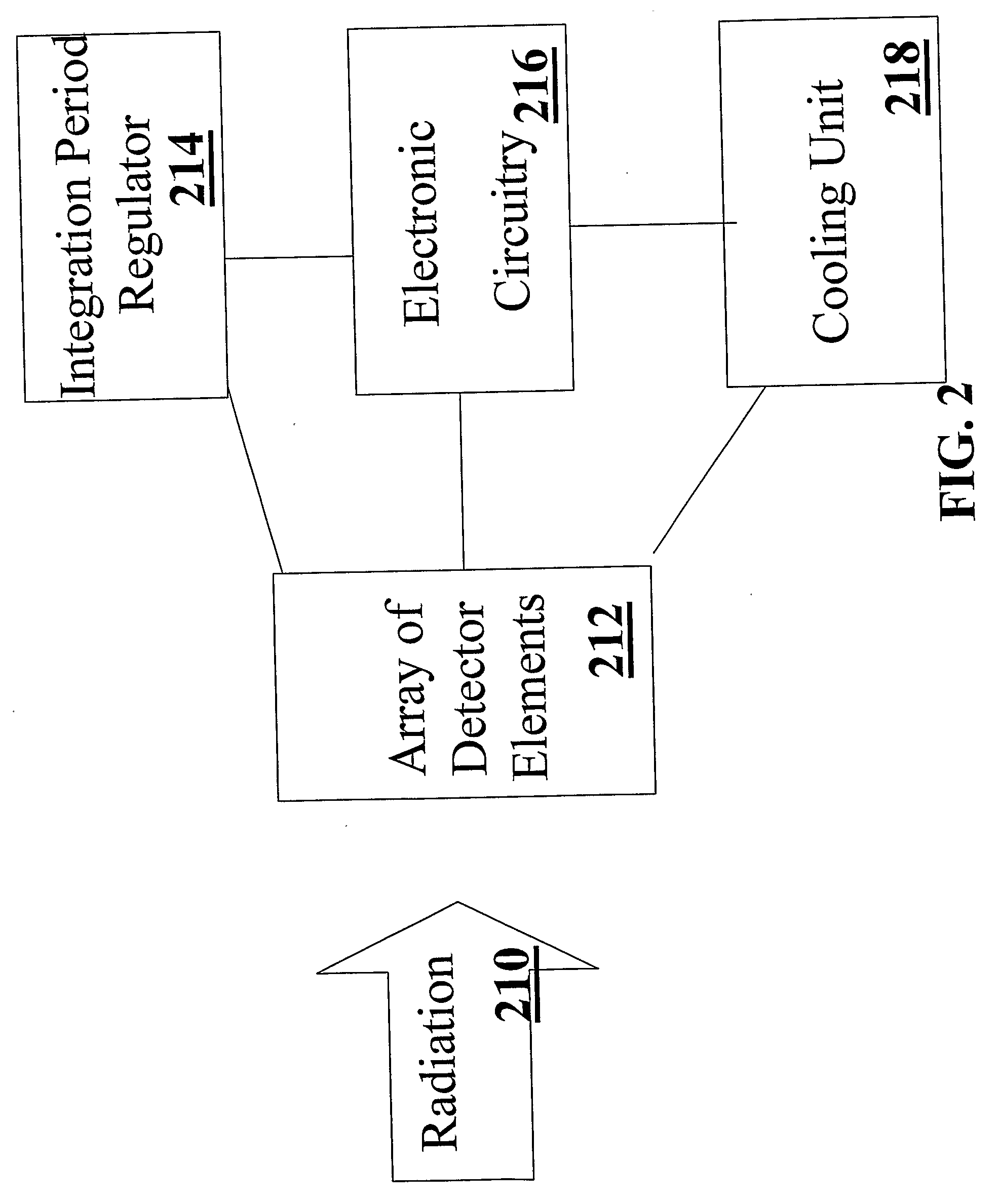Non-uniformity correction of images generated by focal plane arrays of photodetectors
a focal plane array and non-uniform correction technology, applied in the field of photodetectors, can solve the problems of non-uniform noise, non-uniform noise of electronic readout, non-uniform noise of image collection using certain arrays of infrared detectors (or sensors), etc., and achieve the effect of reducing residual non-uniformity
- Summary
- Abstract
- Description
- Claims
- Application Information
AI Technical Summary
Benefits of technology
Problems solved by technology
Method used
Image
Examples
examples
[0082]The following examples are to be considered merely as illustrative and non-limiting in nature. It will be apparent to one skilled in the art to which the present invention pertains that many modifications, permutations, and variations may be made without departing from the scope of the invention.
Experimental Methods and Results
[0083]The present inventors have performed experiments in order to demonstrate image correction techniques in accordance with some embodiments of the present invention.
[0084]Experiments were conducted in order to examine the effectiveness of using a plurality of detected images having different integration periods to implement a non-uniformity correction. An infrared camera (Rafael and Elop, with InSb detector) was used, where the internal NUC of the infrared camera was disabled. Every series of image was recorded twice, first with a longer integration period (t1=about 1.5 ms) and then with a shorter integration period (t2=about 0.5 ms).
[0085]The digital...
PUM
 Login to View More
Login to View More Abstract
Description
Claims
Application Information
 Login to View More
Login to View More - R&D
- Intellectual Property
- Life Sciences
- Materials
- Tech Scout
- Unparalleled Data Quality
- Higher Quality Content
- 60% Fewer Hallucinations
Browse by: Latest US Patents, China's latest patents, Technical Efficacy Thesaurus, Application Domain, Technology Topic, Popular Technical Reports.
© 2025 PatSnap. All rights reserved.Legal|Privacy policy|Modern Slavery Act Transparency Statement|Sitemap|About US| Contact US: help@patsnap.com



